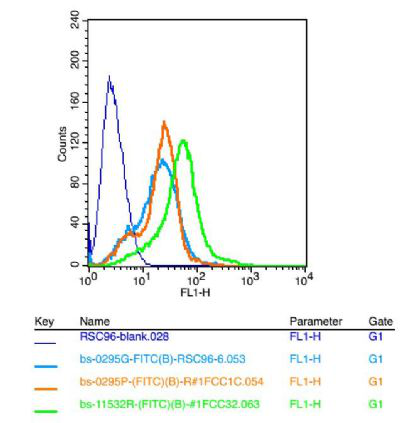产品货号 : mlR11532
英文名称 : PTPRN
中文名称 : 蛋白酪氨酸磷酸酶样N前体蛋白抗体
别 名 : PTPIA2; RPTPN; TPIA2; CA 512; IA 2; IA 2/PTP; IA2; IA2/PTP; ICA 3; ICA 512; ICA3; ICA512; Islet cell antigen 2; Islet cell antigen 512; Islet cell autoantigen 3; Protein tyrosine phosphatase like N; Protein tyrosine phosphatase like N precursor; Protein tyrosine phosphatase receptor type N; PTP IA 2; PTP IA-2; PTP IA2; PTPIA 2; PTPN; Ptprn; PTPRN protein; PTPRN_HUMAN; R PTP N; R-PTP-N; Receptor type tyrosine protein phosphatase like N; Receptor-type tyrosine-protein phosphatase-like N.
研究领域 : 肿瘤 神经生物学 信号转导 激酶和磷酸酶
抗体来源 : Rabbit
克隆类型 : Polyclonal
交叉反应 : Human, Mouse, Rat, Pig, Cow, Sheep,
产品应用 : ELISA=1:500-1000 IHC-P=1:400-800 IHC-F=1:400-800 Flow-Cyt=3μg/Test ICC=1:100-500 IF=1:100-500 (石蜡切片需做抗原修复)
not yet tested in other applications.
optimal dilutions/concentrations should be determined by the end user.
分 子 量 : 102kDa
细胞定位 : 细胞膜
性 状 : Lyophilized or Liquid
浓 度 : 1mg/ml
免 疫 原 : KLH conjugated synthetic peptide derived from human TPIA2:501-600/979 <Extracellular>
亚 型 : IgG
纯化方法 : affinity purified by Protein A
储 存 液 : 0.01M TBS(pH7.4) with 1% BSA, 0.03% Proclin300 and 50% Glycerol.
保存条件 : Store at -20 °C for one year. Avoid repeated freeze/thaw cycles. The lyophilized antibody is stable at room temperature for at least one month and for greater than a year when kept at -20°C. When reconstituted in sterile pH 7.4 0.01M PBS or diluent of antibody the antibody is stable for at least two weeks at 2-4 °C.
PubMed : PubMed
产品介绍 : The protein encoded by this gene is a member of the protein tyrosine phosphatase (PTP) family. PTPs are known to be signaling molecules that regulate a variety of cellular processes including cell growth, differentiation, mitotic cycle, and oncogenic transformation. This PTP possesses an extracellular region, a single transmembrane region, and a single catalytic domain, and thus represents a receptor-type PTP. This PTP was found to be an autoantigen that is reactive with insulin-dependent diabetes mellitus (IDDM) patient sera, and thus may be a potential target of autoimmunity in diabetes mellitus. Alternate splicing results in multiple transcript variants.[provided by RefSeq, Dec 2010]
Function:
Implicated in neuroendocrine secretory processes. May be involved in processes specific for neurosecretory granules, such as their biogenesis, trafficking or regulated exocytosis or may have a general role in neuroendocrine functions. Seems to lack intrinsic enzyme activity. May play a role in the regulation of secretory granules via its interaction with SNTB2.
Subunit:
Interacts with phosphorylated SNTB2, protecting it from protein cleavage by CAPN1. Dephosphorylation of SNTB2 upon insulin stimulation disrupts the interaction and results in its cleavage.
Subcellular Location:
Membrane. Neuroendocrine secretory granules.
Tissue Specificity:
Expression is restricted to neuroendocrine cells. Found in pancreas, brain and pituitary.
Post-translational modifications:
Appears to undergo multiple proteolytic cleavage at consecutive basic residues.
Similarity:
Belongs to the protein-tyrosine phosphatase family. Receptor class 8 subfamily.
Contains 1 tyrosine-protein phosphatase domain.
SWISS:
Q16849
Gene ID:
5798
Important Note:
This product as supplied is intended for research use only, not for use in human, therapeutic or diagnostic applications.
产品图片












